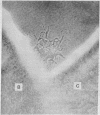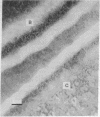Abstract
A large number of nonmotile mutants of the gliding bacterium Myxococcus xanthus have been isolated and partly characterized. About [unk] of these mutants are conditional mutants of a novel kind: mutant cells become transiently motile after contact with nonmutant cells or with cells of a different mutant type. These “stimulatable” mutants fall into five phenotypic classes (types B, C, D, E, and F). Most mutants are nonstimulatable (type A) and never become motile, but type A cells (and wild-type cells) can stimulate cells of any of the other five types. Stimulatable mutants of different types are capable of stimulating each other. For example, in a mixture of B and C cells, both become motile. Linkage analysis using a generalized transducing phage has shown that each of types B, C, D, E, and F corresponds to a single distinct genetic locus. Type A mutants, by contrast, belong to at least 17 different loci. Stimulation depends on close apposition of interacting cells, because stimulation does not occur when contact between cells is prevented. It is possible that the stimulatable mutants are defective in components of the gliding mechanism that can be exchanged between cells. Alternatively, they may be defective in a system of cell communication controlling the coordinated cell movements observed in Myxococcus.
Keywords: intercellular communication, swarming, gliding, development
Full text
PDF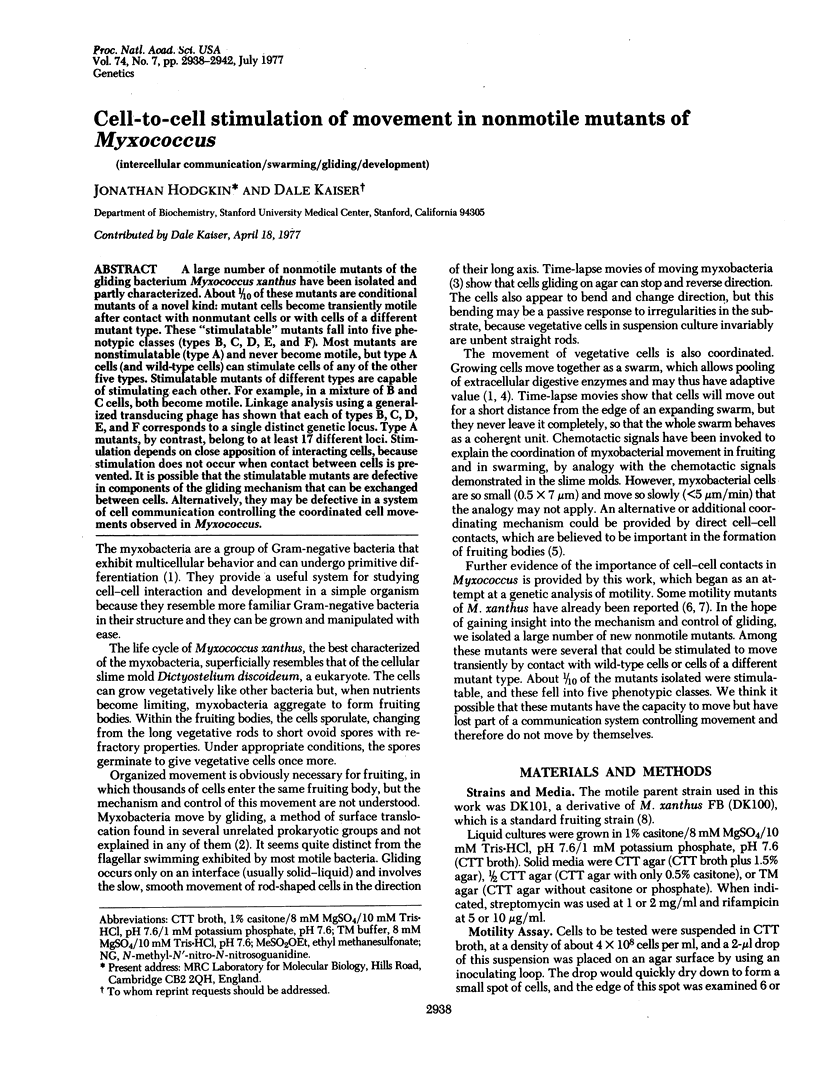
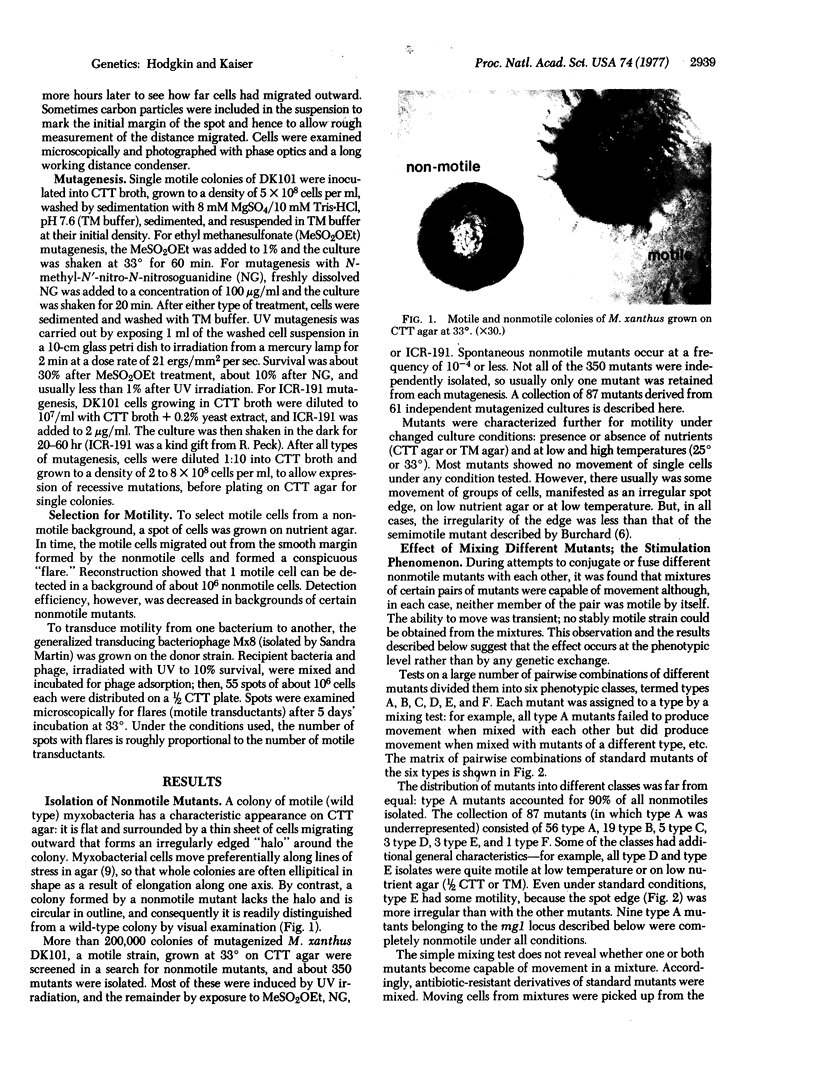
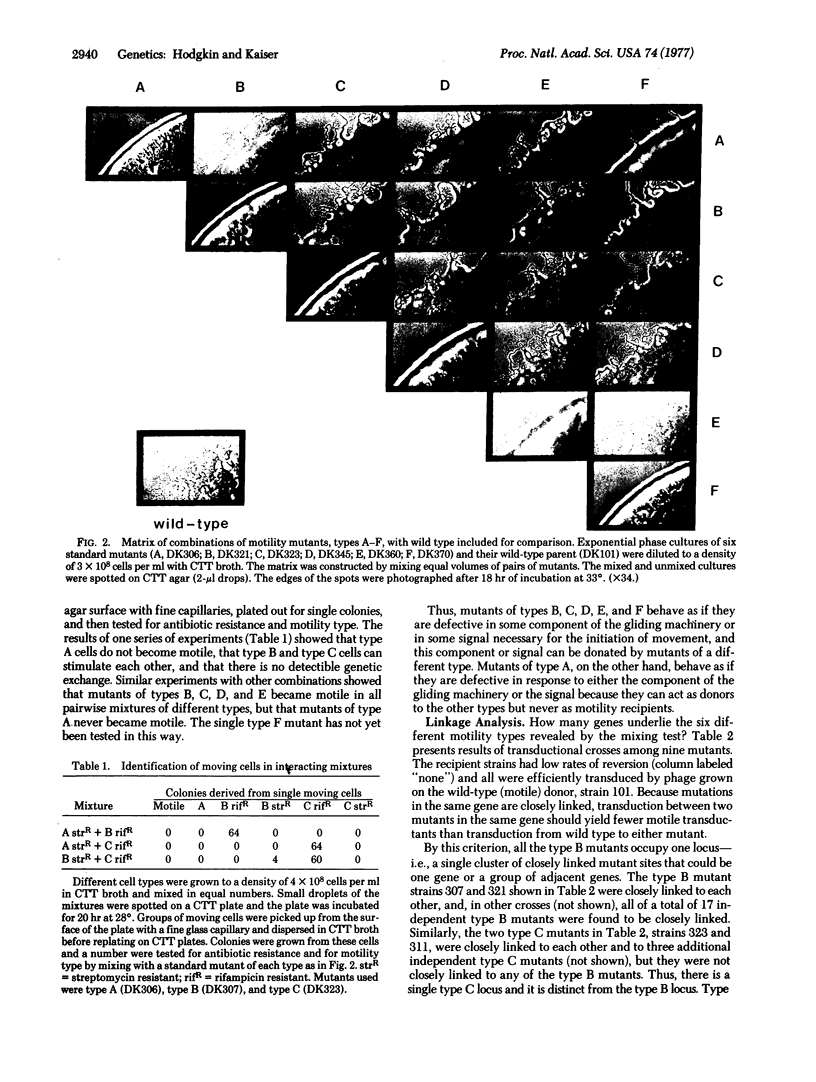
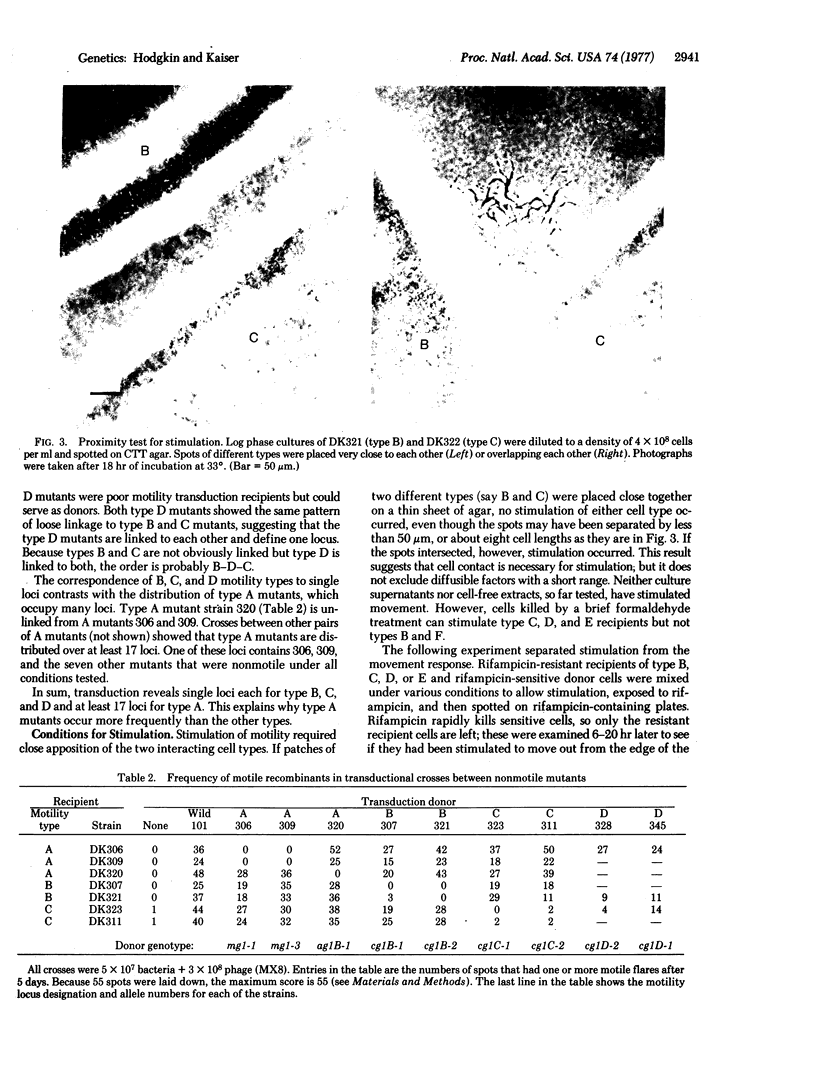
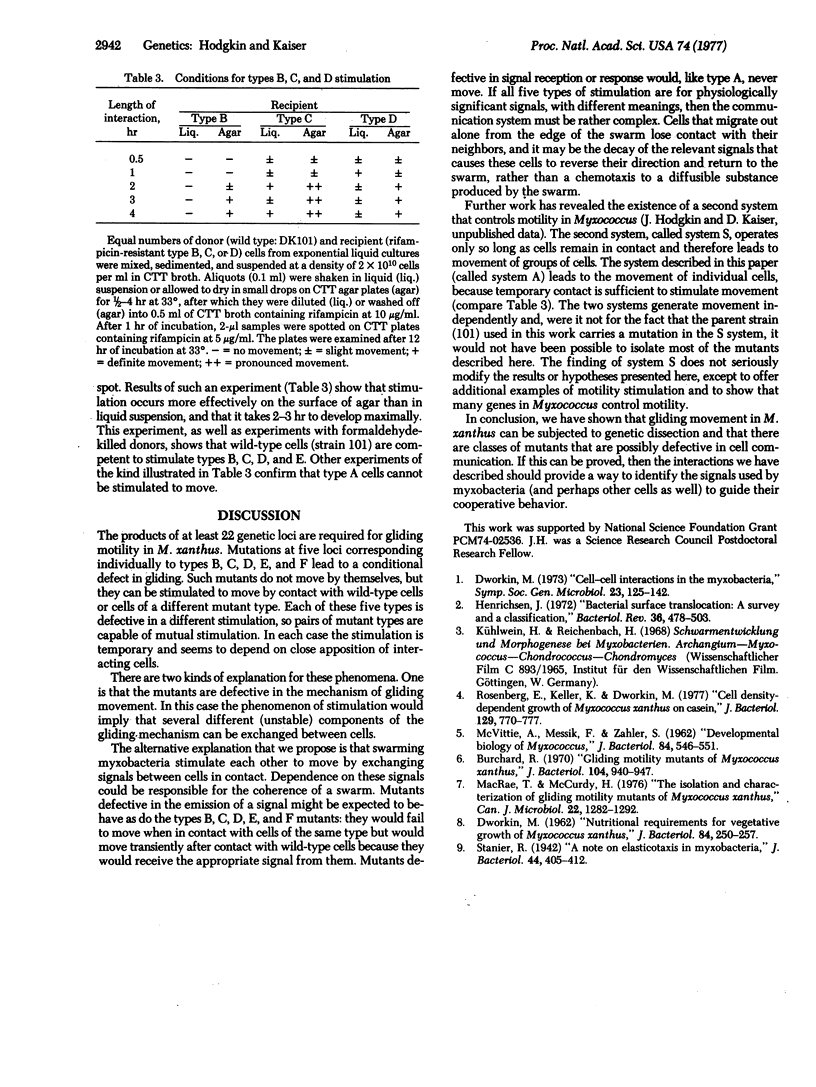
Images in this article
Selected References
These references are in PubMed. This may not be the complete list of references from this article.
- Burchard R. P. Gliding motility mutants of Myxococcus xanthus. J Bacteriol. 1970 Nov;104(2):940–947. doi: 10.1128/jb.104.2.940-947.1970. [DOI] [PMC free article] [PubMed] [Google Scholar]
- DWORKIN M. Nutritional requirements for vegetative growth of Myxococcus xanthus. J Bacteriol. 1962 Aug;84:250–257. doi: 10.1128/jb.84.2.250-257.1962. [DOI] [PMC free article] [PubMed] [Google Scholar]
- Henrichsen J. Bacterial surface translocation: a survey and a classification. Bacteriol Rev. 1972 Dec;36(4):478–503. doi: 10.1128/br.36.4.478-503.1972. [DOI] [PMC free article] [PubMed] [Google Scholar]
- MCVITTIE A., MESSIK F., ZAHLER S. A. Developmental biology of Myxococcus. J Bacteriol. 1962 Sep;84:546–551. doi: 10.1128/jb.84.3.546-551.1962. [DOI] [PMC free article] [PubMed] [Google Scholar]
- MacRae T. H., McCurdy H. D. The isolation and characterization of gliding motility mutants of Myxococcus xanthus. Can J Microbiol. 1976 Sep;22(9):1282–1292. doi: 10.1139/m76-190. [DOI] [PubMed] [Google Scholar]
- Rosenberg E., Keller K. H., Dworkin M. Cell density-dependent growth of Myxococcus xanthus on casein. J Bacteriol. 1977 Feb;129(2):770–777. doi: 10.1128/jb.129.2.770-777.1977. [DOI] [PMC free article] [PubMed] [Google Scholar]
- Stanier R. Y. A Note on Elasticotaxis in Myxobacteria. J Bacteriol. 1942 Oct;44(4):405–412. doi: 10.1128/jb.44.4.405-412.1942. [DOI] [PMC free article] [PubMed] [Google Scholar]





